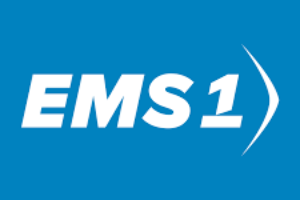A Call for Data-Driven Decisions and Funding Reform
By Michael Loiz
Emergency medical services (EMS) is facing financial crossroads; unfunded mandates and advanced, nonreimbursable technology and procedures place enormous strain on budgets and operational efficiency.
It is crucial for EMS leaders to engage strategically with their industry, partners, and policymakers to control these financial burdens and promote sustainable, data-driven growth.
The Reality of Financial Challenges
EMS agencies are dealing with intense financial pressures, largely because of limited funding sources. Reimbursement rates from Medicare, Medicaid, and private insurers often fall short of covering operational costs with limited adjustments for inflation or service expansion.
Studies confirm that these constraints reduce an agency’s ability to support new technology, field improvements, or community-based health initiatives, creating a backlog of needs that aren’t feasible to meet under the current funding models.1
For example, while mobile integrated healthcare (MIH) has shown promise in reducing hospital visits and healthcare costs2, implementing such programs without additional funding can place financial strain on agencies already stretched thin.
The funding opportunities that exist are often not accessible to the agencies positioned to execute such an initiative.
Defining ‘Progressive EMS’
There are pressures from the EMS community around what the term “progressive” actually means. A truly progressive EMS is not one that chases every new device or protocol, but rather focuses on aligning services with community needs through data-informed decision making.
They are the agencies that prioritize community risk assessments, using data to identify the highest impact areas for service improvement. This approach not only enhances service relevance but also ensures that resources are used wisely.
However, technological or clinical advancements—like those in cardiac arrest management and telemedicine—often come without direct reimbursement, leading to increased operating costs without corresponding revenue increases.
As a result, agencies must resist the impulse to adopt every innovation and instead focus on sustainable, proven advancements that match their community’s specific needs.
The Burden of Process Overflow
Emergency departments place more responsibility on EMS to address hospital process overflow issues, adding tasks like expanded triage and specialized care to their responsibilities.3
This shift, however, overlooks the impact on field providers, who are given more complex roles without the corresponding infrastructure, training, or compensation.
Consequently, as an example, the added responsibilities may inadvertently compromise patient and provider safety, as EMS staff are pressured to meet demands that exceed their traditional scope or responsibilities.
This mismatch between responsibilities and resources strains the workforce, increasing burnout, which potentially affects patient outcomes. It also often comes without formal discussion with the organizational leaders who employ the field personnel.
Inadequate Reimbursement Rates and Municipal Budget Challenges
One of the core issues facing EMS is the outdated structure of reimbursements, which has not kept pace with either the clinical sophistication of EMS care or the rise in operational costs4.
EMS funding is often a small portion of municipal budgets, which are already stretched across other critical services.
Additionally, there is limited grant funding available to support the acquisition of new equipment or the implementation of important new programs like MIH, making it difficult for agencies to provide innovative care without impacting other essential services.
Immediate Actions for EMS Leaders
A few key tasks that EMS leaders can undertake to ease pressure on their agencies are as follows:
1. Engage in Collaborative Partnerships: Form partnerships with hospitals, local government agencies, and community organizations to share resources or costs associated with new services.
2. Focus on Cost-Efficiency Programs: Prioritize programs or protocols that demonstrate measurable savings or efficiencies, such as MIH, which can reduce hospital readmissions and emergency transport.
3. Advocate for Increased Reimbursement Rates: Work with state and federal agencies to push for reimbursement adjustments that reflect the evolving role of EMS in healthcare.
Advocacy Strategies for Sustainable Funding
Here is a list of advantageous strategies to advocate and gather additional resources for your EMS agency.
- Highlight the cost-effectiveness of EMS. Use data to show how investments in EMS can reduce overall healthcare costs through proactive, community-based care.
- Showcase success stories. Share examples of cost-effective, impactful programs like MIH to illustrate how EMS can enhance public health with the proper funding.
- Engage with local, state and federal legislators. Consistently advocate for policy changes that will adjust reimbursement rates to reflect the real costs of EMS services.
- Educate the public on EMS value. Inform the community about the critical role EMS plays in healthcare to build public support for increased funding.
- Leverage grants and alternative funding. Explore innovative funding models, such as private-public partnerships or grants, to support essential service expansions.
By implementing these strategies, EMS leaders can better navigate financial constraints and advocate for systemic support, ensuring that their agencies are equipped to meet the communities’ needs while safeguarding both provider and patient safety.
More from the Author
The Impact of Climate Change on EMS: Preparing for More Extreme Weather Events
Best Practices for EMS Instructors: Shaping the Future of Emergency Medical Services Education
References
1. Time Magazine. (2024). In Alabama, Doctors Receive Just $1,690 for Nine Months of Pregnancy Care. Retrieved from https://time.com/6972880/maternity-ward-closures-us
2. Beck, E., Craig, A., Beeson, J., et al. (2012). Mobile Integrated Healthcare Intervention and Impact on Hospital Utilization. Annals of Emergency Medicine. Retrieved from https://www.annemergmed.com/article/S0196-0644(17)31052-1/fulltext
3. HealthLeaders Media. (2023). Innovative Partnerships Power Mobile Integrated Health Programs. Retrieved from https://www.healthleadersmedia.com/innovation/innovative-partnerships-power-mobile-integrated-health-programs
4. Time Magazine. (2024). How Low Medicaid Reimbursement Rates Are Contributing to a Healthcare Crisis. Retrieved from https://time.com/6972880/maternity-ward-closures-us





